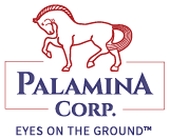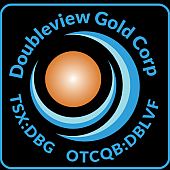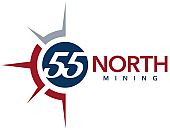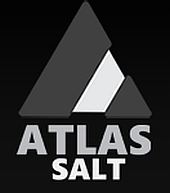I don’t normally look at companies like this but Globex Mining Enterprises (GLBXF) is not what you think. They have an incredible balance sheet with $7.5m USD cash + $13.5m in investments. The CEO hates debt so they have none, carrying only a couple hundred grand in current payables.
As I type, the stock is at $0.75 USD giving a market cap of $42m. Book value is $24.3m with $20.8m of that being cash + securities. They own their buildings outright and carry those around a million. Add that up and the market is valuing the operating company at about $20m.
This is where it gets interesting because Globex is really a hidden balance sheet play. The company owns 252 mining properties and 106 mining royalties, all of which are carried at zero because the frugal CEO doesn’t want to pay auditors for assessments. Your job today is decide if you think those 252 properties and 106 royalties are worth more than $20m USD.
Globex calls themself a Mineral Property Bank. I think of them as basically a value investor focused on mining properties and the stock picker is CEO Jack Stoch. One of the risks is how dependent they are on Jack and what happens when he’s gone. He’s an older guy who’s been running the company since 1987. In this interview he talks about the beginning. Jack is a geologist who bought up a mining property from the previous rendition of the company for $500 CAD. The company went down to nothing and owners wanted a tax loss, so he bought their shares for pennies. Down the line a broker convinced him to take it public so he put the property back in and started it up. The company is based in Canada and listed in Canada (TSX: GMX), USA (OTCQX: GLBXF), and Germany (FSE: G1MN). I own the US listed stock GLBXF and my brain works in US dollars but in this article I quote Canadian dollars in many places because that’s what the company press releases, reports, and inverviews are in. Right now the internet tells me $1 USD = $1.39 CAD and $1 CAD = $0.72 USD.
What Globex does is basically Jack acquires mining assets when they’re out of favor then patiently waits for sentiment to turn while also doing work on the properties to increase their value and visibility. That work might be drilling samples, carrying out surveys, or paying a qualified person for inspections and reports. The company has 12 employees with half of those being geologists. As far as I can tell Jack handles negotiations.
Globex’s preferred way of making money from their properties is a 4 year option deal. Some other company comes in and pays globex to mine on the property. The other company has to come up with the huge Capex requirements for mining, processing, logistics, etc while Globex just sits and receives option payments. At the end of the deal if the other company has made the payments and met the requirements then they get the property while Globex retains a Gross Metal Royalty (GMR) of something like 3%. Under the terms of a 3% GMR the company must pay Globex 3% of the gross amount of whatever mineral is pulled out of the ground forever. Here’s an example from the most recent annual:

That example illustrates the pieces of their deals. Globex spends nothing and incurs zero risk while just receiving option payments. The other company has to spend a certain amount on the property which also increases the value of the property itself. I think it’s sort of an extreme example, but Jack has a property called the Duquesne West/Ottoman Gold Project which he has optioned off 7 times. Each time Globex receives cash and/or shares while these other companies do work on the property. The other company is taking all the mining risks of raising capital, permitting, facilities construction, mineral pricing, political uncertainty. The other company is actually raising the value of the property in question as they build on it or dig up samples. Then if the other company doesn’t fulfill part of the agreement the property falls back to Globex.
Every year Globex does spend a couple million doing work on their properties. They drill up samples and pay for studies. It’s all to increase the value and visibility on their properties. I’ve listened to several YouTube interviews with the CEO. See
here,
here,
here,
here (pro-tip you can double the playback speed). One thing Jack talks about is not buying grassroots projects or speculative junk. He buys properties with real tangible value that has been explored or looked at somehow in the past. He’ll buy former mines. He’ll buy properties next to active mines. He’ll buy when prior owners go bankrupt or markets turn south. Jack hates debt and risk so he doesn’t partake. Globex owns all their properties, buildings, vehicles outright. Jack only deals in democratic areas with as little political risk as he can get so they own properties in Canada, USA, and Germany.
This
Globex writeup has a good example of Jack’s deal making and the Globex value proposition, illustrated with their Lac Fortune Gold Property.
“100% ownership of a past-producing mine with modern infrastructure for what ultimately turned out to be just $25,000 in actual cash plus a couple million in the coming years in exploration expenses Not too shabby, right? Even if this project had just sat in Globex’s catalogue to this day gathering dust, I don’t think anyone would complain about the concept of turning $25,000 into a past-producing gold mine and upgrading it with new discoveries. So it is clear Jack knows how to shop for a good deal.
But that isn’t where the story ends if you remember where I started this update. To be clear – it isn’t just gathering dust. In fact, Globex sold this project to Yamana Gold (now PAAS) in 2021 (though now owned by Agnico Eagle) as Yamana sought to consolidate its own land package in the area. The price tag? $11 million in cash over 4 years, and $4 million in shares up front (which are now worth $5m). So Jack turned $25,000 into an old gold mine, then followed that up with a few hundred meters of trenching and shallow drilling to revitalise the property, which in turn lead to it being sold for some $15+ million in total equity . That’s a ~7.5X on invested capital – for those keeping track out there – in just 5 years of ownership.”
These deals are how Globex has acquired their extensive stock portfolio. Below is from the
most recent quarterly:
This YouTube interview has a few more examples of Jack’s deal making. He talks about a Uranium property originally bought for $5k CAD which he sold for $600k plus stock. Talks about another property he got for under $300 CAD by staking and sold for a couple million shares, $100k cash, and a royalty. He mentions another which he’s optioning for the 3rd time with a 4 year deal for $6.4m CAD cash, $4.8m in shares, $12.25m work they must do on the property, $100k/yr advance royalty, 3% GMR. Each time optioning the land the company has moved it forward and each time Globex has made money.
In
this interview he mentions optioning out one property which they believe already has over $30m CAD in work done on it. Another property has over 800k ounces of gold (that would be $2b total at current price). He talks about buying one property for $1k CAD.
A big uncertainty with all of this is timing. One example from
this interview is a property Globex owned that was under water, literally under a lake. Globex did some drilling to prove the value of what was there and the logical buyer was an active mine next to the lake. Jack said it took 25 years to get the deal done and in the end he got over $1m CAD cash.
If mining companies are spending $30m CAD on a property they must believe it could generate many times that once in production. But how much time does it take to get to production along with all those obstacles along the road, that’s the risk.
If you look at Globex financials over the years you can see a big spike in revenue in 2021. They did two big deals that year. In
March 2021 they sold two zinc royalties from their Mid-Tennessee property for $18m CAD in stock and cash. In
June 2021 they sold the Lac Fortune Gold property to Yamaha Gold for $15m CAD.
Lac Fortune was
acquired by Globex in March 2020 so that payout was less than two years. Mid-Tennessee
was sold by Globex to Nyrstar in 2009 and Globex collected royalties for a decade before this big deal. You just really don’t know the timing on these things
If you think about all those deals while zooming out with the big picture you can see this has the look of a snowball rolling down a hill. Below are a couple pictures from the
most recent investor presentation.
Now think about that while looking at this long range chart. The big stock movement at the start of 2006 came when they listed on the German stock exchange. Jack said there was a stock newsletter written there in Germany and interest drove it way up. Then in late 2007 the company was approached with a buyout offer at $7 CAD = $6 USD at the time. The deal fell through but I mention it just to add a piece to the puzzle of what this thing is worth. Given the share count that’s $108m USD when Globex had 76 properties and 6 royalties, whereas now Globex has 252 properties and 106 royalties available to you for $20m USD.
Overall I just don’t think the market has kept up with all of Jack’s deal making and acquisitions. Let’s overlay market cap on top of that picture with number of projects and royalties.
If we show revenue and cash against that market cap you can see the stock has just stagnated against the company progress. Revenue is rising as more and more of the royalties start paying and deals work out. Cash & securities are growing for the same reason.

One thing I don’t love is the share count with 56m outstanding. If you listen to those YouTube interviews you’ll hear the CEO brag about how low the share count is and how they never dilute. It reminds me how every statement made is relative to one’s experience. In my world this is a lot of shares and too much dilution but in the mining world I think it’s peanuts. But really this is just another indication of the snowball rolling down the hill towards prosperity. They used to issue stock via private placements every year to fund the exploration and deals. You can see all the announcements in their
press releases. The last private placement was in 2019 around the time buybacks started. Globex has bought back 2.5m shares over the past 6 years and has an active program
right now to buy back up to 1m shares per year.
All of that is to say I think the decades are deal making are starting to show good progress.
In
this interview Jack was asked what he’ll do with the cash and how he will try to close the gap between intrinsic value and stock price. He basically said he’s going to continue doing what he does but maybe he can take bigger swings at the plate. Rather than spending a couple million CAD per year on exploration and work on his properties maybe he can double that. He said he’s starting to put together larger group deals of his properties. He said he gets approached all the time about selling off royalties and he can start grouping those together as well. He’s said he doesn’t like dividends since their revenue is lumpy. He does like doing stock buybacks which they are doing. He said they have considered bundling up properties and/or royalties to spin off to shareholders.
The two big risks I see are Jack himself and time. Jack is getting older and I don’t know if anyone else can do what he does. In
this interview he talks about trying to find a successor which he has tried for some time it sounds like. He says he does not want to do this until he dies but he will not leave shareholders in a bad position. His replacement has to be able to evaluate all these properties from a geology point of view as well as negotiate which he says is the hard part to find. He talks about how he needs to find someone who values shareholders money more than their own pocket book. Jack and his wife are the largest shareholders with ~11% of the stock after all. Overall he just sounds perfect to do what he is doing and for us as shareholders. He is incredibly risk averse, patient, and optimistic.
The time risk I don’t know what to say other than that plus the confusion about what this company could actually be worth are why we have this opportunity in the first place. The stock doesn’t screen since he has all the properties and royalties valued at 0 on the books. Globex owns so many different things I don’t know how anyone could put an accurate number on the value. As Jack says in some of those interviews, Globex owns over half the periodic table.
So then what is it worth. Let’s go through a few examples of the properties and royalties. Again keep in mind the market will sell this whole bucket of properties plus royalties to you for $20m.
Here is a writeup on Globex under which the author tries to value various properties and royalties. I’ll just note a few of the numbers.
- Nordeau has 311k ounces of indicated + inferred gold which would be worth $16m USD to Globex with the 3% GMR if it gets into production
- Kewaga is a similar story worth $7.1m USD if in production
- Labyrinth $26m USD if in production
- Parbec $14m USD if in production
- Duquesne West $26m USD if in production
There is a high risk of any one of the project getting into production but the point here is Globex has so many and of such varied types that risk is spread out. We don’t know the timing on any single one of them but Globex has been acquiring and working on these for decades so as we move forward the chances of payout go up as you can see by the increased royalty revenue over the years.
This YouTube interview has a good section where Jack talks about a handful of properties that excite him. One is the
Timmons Talc-Magnesite Project which the company bought out of receivership in 2000. In the interview he talks about Talc as being the exciting aspect. He says high brightness talc is used in plastics production and right now all the high brightness talc in the world comes from China. Well he has this huge deposit in Canada with a projected mining useful life of hundreds of years. This study from 2012 estimates a net present value (NPV) of ~$150m USD and I can only imagine it’d be much higher now. Jack said he is searching for the right partner. He had a couple firms interested then covid hit. As of the YouTube interview one of them had come back to the table and were coming to do their own investigative work on the property.
Mont Sorcier is a property Globex maintains a 1% GMR on all iron from.
This study estimates a 37 year life of the mine at 5m tons annual production with 65% of that being iron. At $100 USD per ton that means $3.25m USD royalty per year to Globex. All of these examples are subject to the risk the mines actually get into and stay in production, but you get the idea.
Battery Hill is a manganese royalty property.
This press release talks about a study that estimates a 47 year mine life with $177m annual revenue. Globex holds a 1% GMR which would deliver $1.77m USD annually that whole time. Again if in production.
I’ll finish example hour with Ironwood which is a gold deposit in Globex’s
Wood / Central Cadillac property. At the moment I think this one has the highest potential to be a game changer and most likely to be a short term catalyst. This one exemplifies the Jack’s patient approach. The
oldest report on Globex’s website is from 2003 and it notes “We also transformed Globex’s back-in right in the Wood Gold Mine property into a 50% ownership right and Globex became project manager.” and “The discovery by Agnico-Eagle of a significant gold deposit approximately 4km to the East on the same stratagraphic horizon which traverses the Wood property has increased the importance and economic potential of the property.” From 2004 to 2022 Globex had a JV on the property did work there studying, drilling, etc. In 2008 they put out
a report showing an estimated 243k tons at 17.26 g/t of gold there. That would mean 4.2m grams of gold = about $370m USD at current prices. The JV was
terminated in 2022 and somehow that led to Globex getting a 100% interest in the property. The
2019 annual report mentions Globex buying a previously existing 1.5% Net Smelter Royalty (NSR) on the property. The
2021 annual report and the
2022 press release talk about Globex buying more of the underlying claims and royalties. Jack talks about Ironwood in this
YouTube interview at about the 30min mark. He says it’s a very small deposit of extremely high grade. To mine it requires no permanent infrastructure and it can be treated at a local mill. There are already paved roads, power, labor, and everything you’d need right there so capital costs are very small. No guarantees of course but he believes it can be mined with a ramp in about 28 months and it’ll provide “a big slug of cash.” Here’s
another CEO interview on YouTube where he talks about Ironwood, posted on Sept 30, 2024. Jack talks about using their cash this year to drill a couple of properties. Normally they don’t drill themself but he plans this because he thinks doing this themself will greatly increase the value of the properties. He says they plan to use Novamera which is a new process that is supposed to make capital costs go way down. Sounds like they basically drill the hold and dump that into trucks which go to the local mill for processing. That’s why Jack is talking about low costs and easy logistics. I don’t love Globex doing the mining themself since that’s a change of business model but I’m basically trusting Jack here. He is super risk averse and hates debt. He’s been working on and thinking about this property for at least 20 years. He said he’s been approached even very recently about selling the property but they wouldn’t pay what he knows it’s worth. Maybe once he starts pulling up gold that’ll change.
I am going to leave the story there. I could go on with more deal examples and more property potential but you get the idea. Globex has a great website you should check out if you want more info.
Here are all their press releases going back to 2003.
Here are reports back to 2003. All the properties are
here. Investor presentation
here.
Positives on this one are the balance sheet and incredible amount of potential carried at zero. Negatives are you will have to wait and I don’t know how long. I don’t see how the stock is not very cheap, but the question is how do we get to the promised land.
Below are the
recent press releases, showing how much is going on. It reminds me of my own diversified stock portfolio full of things here and there acquired when the market wasn’t interested. So now I sit and wait for someone to get interested.
–Dan
disclosure: long GLBXF
 NoNameStocks: Value for the Patient at Globex
NoNameStocks: Value for the Patient at Globex









































